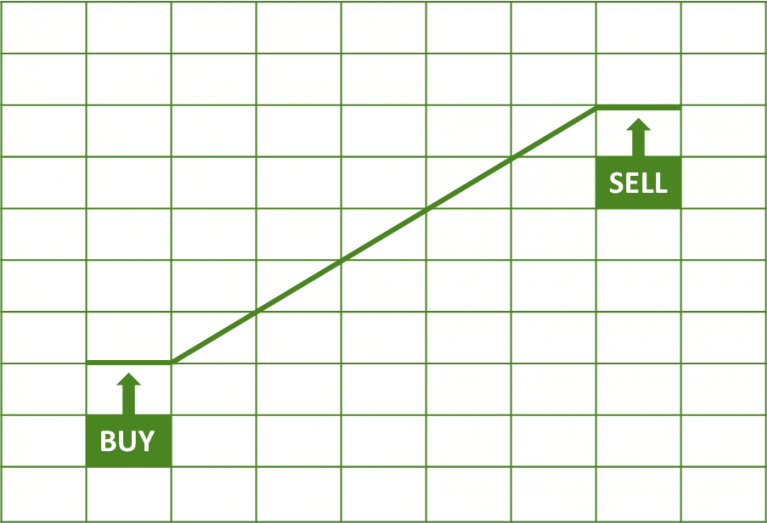Going Long
What does going long mean?
Those of you from Mumbai or NCR probably know or have heard of someone who bought land in Panvel or near Jewar around the time the new international airports were announced. They held onto that property for years in the anticipation that prices would rise. Now that the airports are close to completion, they are looking to cash in and make a tidy profit.
The same strategy is followed by traders in the stock market as well. Here, when you buy a stock or a derivative contract (viz. futures or options) in the anticipation that its price will rise, it is called going ‘long’.
Illustration 1: Going long

By going long, you can create a completely new position or you can add to an existing long position.
What do traders expect when going long?
The decision to go long is based on the following expectations regarding the movement in a stock or an underlying asset.
Illustration 2: Directional move
| Underlying Asset | Stock | Futures | Long Call Option | Long Put Option |
|---|---|---|---|---|
| Expected Movement | Up | Up | Up | Down |
What’s the reward?
Once you are long at a certain price and then the price rises from there, you have an opportunity to sell and pocket a profit. The age-old mantra of ‘buy low, sell high’ works here. Interestingly, the maximum profit one could make by going long is, theoretically, unlimited. This is because there is no limit to which an underlying stock price or call option value can rise.
However, it is rare for a stock price to jump 2x or 3x, in a short period. In contrast, it is possible for options premiums to increase by a large quantum, because of the leverage involved. We will learn about this in the upcoming chapters.
An option is considered a 'derivative contract': it derives its value from the value of the underlying stock or asset. Any rise or fall in the value of the underlying will have a multiplier effect on its options contract. Thus, the amount of increase or decrease is also higher.
Let’s move on and discuss the risks of going long.
What’s the risk?
Going by the explanation above, one would think that the amount of loss would also multiply in case of options. But that is not so. When you go long, the maximum risk is what you have already paid for. Let’s understand this for a stock first, and then for options.
Let’s say you are long one share of Smartco Ltd., a hypothetical company, at ₹500. The maximum you could lose is the entire ₹500. While such an event seems unlikely in a major company, it is possible. However, had you bought stock using margin, you could stand to lose more than what you had invested initially.
If you go long on options, you could lose the entire premium. This would happen if the option isn't profitable at expiry. As such the multiplier effect doesn’t work here in the same way as it does in the case of a profit scenario, because the value of an option cannot drop below zero.
By the way, you must pay the full amount for buying options and cannot buy them using margin.
Long vs Long
The usage of the term long in trading derivatives should not be confused with the term used to refer to a duration for which an investment is held i.e. long-term.
Finally, do remember, whether you go long or short, an option is only valid till expiry. In the next chapter where we will discuss the opposite of going long. Going short…
Summary
- When you go long on a call option, you believe the underlying price will rise.
- When you go long on a put option, you believe the underlying price will fall.
- You can create a new position or add to an existing one when going long.
- If you incur a loss by going long on an option, you could lose the entire premium.
Is this chapter helpful?
- Home/
- Going Long